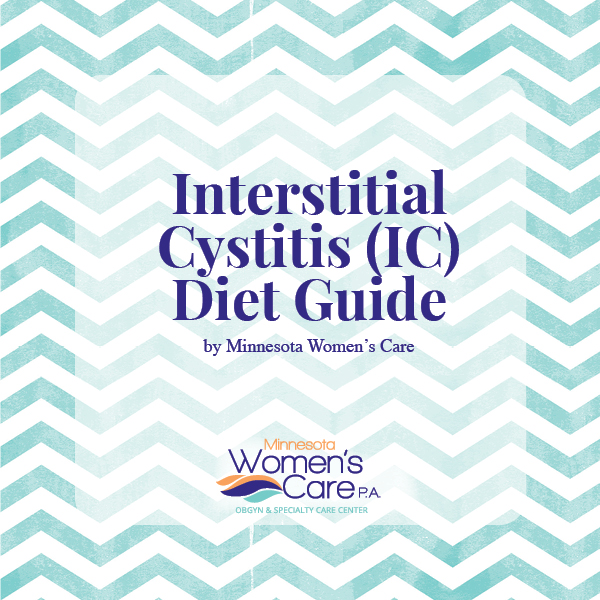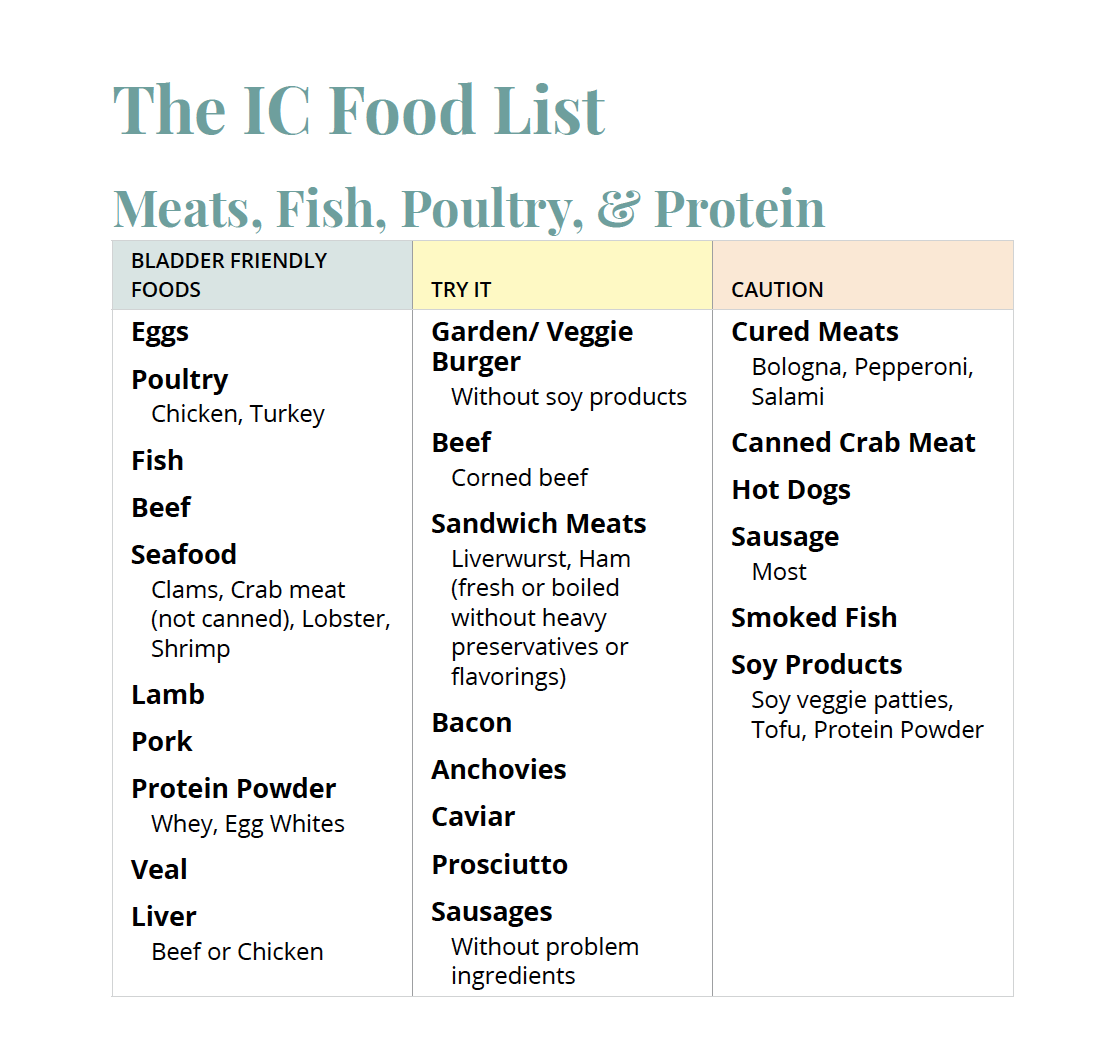 About The Interstitial Cystitis Diet
About The Interstitial Cystitis Diet
Minnesota Women's Care is known for solving some of the most complex pelvic floor disorders in women. Our approach is clear. First, we listen. Then using the most advanced diagnostic tools, we work to determine the specific cause of each woman’s symptoms and to find a solution – the one that’s right for her.
We offer a wide range of solutions and treatment options. Many women find recovery with a non-surgical treatment plan. For some women who have been diagnosed with IC or who experience bladder irritation, this IC Diet Plan has been helpful. We invite you to download the guide. For further help with bladder issues or any other pelvic floor conditions, our pelvic floor team is here to help.
Download The Interstitial Cystitis IC Fact Sheet and Diet Guide
Introduction
Dietary Considerations for Interstitial Cystitis (IC)
Interstitial Cystitis (IC) is not well understood but the link between food and the occurrence of pain episodes is very clear. According to the Interstitial Cystitis Association (ICA), interstitial cystitis (IC) “is a condition that consists of recurring pelvic pain, pressure, or discomfort in the bladder and pelvic region, often associated with urinary frequency (needing to go often) and urgency (feeling a strong need to go)” (Beyer, 2010). Unfortunately, there is no cure. HOWEVER, through nutrition and lifestyle behavior changes, relief may be found as a form of remission!
What foods cause flare ups of Interstitial Cystitis (IC)?
Most patients with Interstitial Cystitis will notice a significant decrease in pain severity and episodes after following an elimination diet utilizing the Bladder Friendly Foods in "The IC Foods List" PDF provided. If this occurs, then you have confirmation of the diet link to your pain. Once you have established that there is a dietary component to your pain, the next step is to figure out which foods are the culprits. To do this, you will want to add in a small amount of one food item per day to determine which foods are safe for you or cause pain and should be avoided. For additional information and guidance with this diet, and to assure you are still meeting your nutrient needs, call us and make an appointment with our Registered Dietitian, Kaylie Brand, RD, LD.
Quick Synopsis: Foods to avoid for Interstitial Cystitis (IC)
A complete list of foods is included, but here is the short and sweet version. Avoid:
• Citrus fruits
• Tomatoes and tomato based sauces
• Coffee
• Tea
• Carbonated and alcoholic beverages
• Spicy foods
Additional Information
Life happens and If you feel you have to have a food item you know will cause a problem use “Prelief”. Prelief is an over the counter neutralizer that if taken 30 minutes before eating can help to decrease the occurrence of pain.
Beyond food, there are other complications that may cause IC symptoms such as sleep, stress, menstruation, and other lifestyle habits and patterns. Keeping track of these patterns may be beneficial to determine what else may be contributing to your symptoms.
Diet alone will not solve the problem and there is no known cure for Interstitial Cystitis. Diet along with the other therapies and interventions can offer significant relief to those suffering from the pain and bladder symptoms associated with Interstitial Cystitis.
Melvin L. Ashford, MD
CEO and Founder
Minnesota Women’s Care
OBGYN and Specialty Care Center
GENERAL Recommendations
The Interstitial Cystitis (IC) Diet
A complete list of foods – with both bladder friendly foods and foods to avoid – is in the downloadable PDF. This list is supplied as a quick reference.
IC Diet: Bladder Friendly Foods
Beverages
Plain water, blueberry or pear juice, milk, milk substitutes (almond milk, rice milk, Lactaid), vanilla milkshake, peppermint or chamomile tea, non-dairy creamers (some), non-alcoholic eggnog
Dairy
Cheese (American, mozzarella, mild cheddar, feta, ricotta, string cheese), cottage cheese, cream cheese, ice cream (some), milk, milk substitutes (almond milk, rice milk, Lactaid), sherbet (no citrus or chocolate flavors), vanilla Rice Dream dessert, whipped cream (from dairy, Cool Whip, Dream Whip)
Meats, Fish, Poultry, & Protein
Eggs, chicken, turkey, fish, beef, seafood (clams, un-canned crab meat, lobster, shrimp), lamb, pork, protein powder (whey, egg whites), veal, liver (beef or chicken)
Vegetables
Asparagus, avocado, beans (black eyed peas, garbanzo, lentils, pinto, white, most dried beans), beets, broccoli, brussels sprouts, cabbage, carrots, cauliflower, celery, chives, corn, cucumber, eggplant, green beans, greens (collard greens, kale, mustard greens, okra, swiss chard, spinach, bok choy), lettuce (and most salad greens), mushrooms, black olives, parsley, peas (green, snow peas, split peas), bell pepper (yellow, orange, red), potatoes (white, yams), pumpkin, radishes, rhubarb, rutabaga, squash (summer, winter, zucchini), turnips
Fruits
Apples (Gala, Fuji, Pink Lady), applesauce (from apple varieties noted), blueberries, coconut (without preservatives), dates (without preservatives), pears, rhubarb, watermelon
Grains
Breads (cornbread, oatbread, pita, potato bread, white bread, Italian sweet bread, whole wheat bread), cereals (most cereals without problem ingredients), oat cereal, rice cereal, crackers (matzo), grains (couscous, grits, millet, quinoa, spelt), flour (buckwheat, wheat), pasta, rice
Soups
Homemade soup & stock (from okay meats and vegetables)
Sweets & Desserts
Blueberries, cake (homemade pound cake, homemade white/yellow cake, angel food cake, carrot cake), frostings (homemade vanilla frosting, homemade caramel frosting, carob, whipped cream), carob (chocolate substitute), cookies (oatmeal, shortbread, sugar), muffins (carrot), cheesecake, crème brule, custards, pie (custard, cream pie, homemade apple pie made with safe apples, pumpkin pie), divinity (nougat made with egg white, corn syrup and sugar), sweet breads (homemade zucchini bread), pastries (plain, almond, pear), peppermint or vanilla ice cream, pudding (tapioca, vanilla, rice), milkshake (vanilla), sweeteners (brown sugar, honey, sugar, maple syrup)
Snacks
Almonds, carrots, celery, plain chips (corn, potato, crackers (soda or soup), fruit bars (blueberry or pear), milkshake (vanilla), oatmeal bars, peanuts, peanut butter, popcorn, plain pretzels
ABOUT Preservatives
Avoid: Benzyl alcohol, citric acid, MSG, NutraSweet, saccharin. Any food with preservatives and artificial ingredients or colors.
Tips for dining out:
Eating out can be difficult for individuals with IC since it is hard to know what ingredients are being added. That does not mean you are out of luck.
- Plan-ahead by checking out the menu.
- Do not be afraid to ask for modifications. Example: Choose “no seasoning” on a burger
- For social events, prepare a dish that is safe for you and bring to share with everyone!
